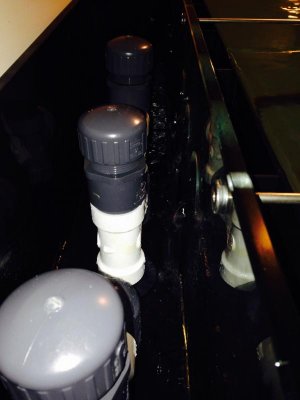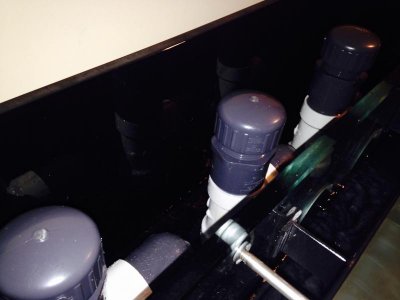uncleof6
Active member
I'm not worried about installing it physically I'm just trying to iron out the technical details.
I'm a sparky so forgive me but I vaguely remember cavitation from fluids class and I'm sort of confused why a pump would be designed with a 1" inlet/outlet if I need to run a 1.5" pipe inlet/outlet.
Well I am a C10 and a sparky journeyman as well, but the classes don't cover fluid dynamics, and designing pump fed plumbing systems. The sparky end is motor controls, and that is where it ends, and motors are a speciality with the electrical trade and require additional training beyond the "apprenticeship."
Pump fed plumbing systems are an engineering problem. With centrifugal pumps, the inlet/outlet size of the pump do not determine the size plumbing required. The size of the plumbing is determined by the requirements of the system. Even the size of the pump itself is based on the needs of the system, not what someone said would be good to use, or that is the pump you happen to have on hand, and it should be the LAST purchase for the system, not the first. The is one of the few cases inwhich the cart needs to come before the horse. There are things other than static lift (pressure head) that have to be taken into account. Among them are net suction head pressure available, net suction head pressure required, friction losses in the pipe, fittings, it can get very involved.
To keep it simple, and not delve into the math/physics wherefore and thouarts, it is a simple basic principle, and practice when plumbing in a centrifugal pump, to upsize the pump outlet pipe size one size above the actual outlet size of the pump. This cuts the friction loss in the outlet plumbing by 1/2 - 2/3 and it is generally closer to 2/3. However, if the outlet plumbing is larger than the actual pump inlet size, the inlet plumbing needs to be upsized as well, to the same size as the outlet or larger. Otherwise the pump will cavitate. This is independent of the "static lift" or pressure head on the pump. Under the tank or down in the basement, same same. It is the same for all centrifugal pumps, from the little 1/15hp and 1/8hp hobby pumps up to the 3hp pumps I run in some cases, and larger.
Many have a hard time grasping the concept, so you are not alone. One fella, (here on RC) was not getting any flow out of his pump up from the basement, running 1" pipe. A pump similar to yours IIRC (100HD, rated for 45'.) The static lift was 14'. After some "reverse engineering" it turned out the actual dynamic head on the pump was 42', just below shut off head.
This little factoid has been around as long as I have been in the business/hobby (36 years.) Why folks in the hobby ignore this I don't know. I am certain many are not aware of it; i know that many don't bother reading the instructions that come with their pump. Danner Mag 9.5 and above (sporting a nice little 3/4" outlet) require 1.5" outlet pipe to get any flow out of them. It is right there in the instructions. Reeflo, is more direct to the point, with their instructions and specifically state "The inlet and outlet size of the pump do not determine the pipe size needed."
You are right, though. It makes no sense to run 1.5" return plumbing and then reduce to 1" to go through a bulkhead for aesthetics. That is why you should not go through the bulkhead. That is how tank manufacturers think things should be done, not what fluid dynamics says how things should be done.
The max flow for a 1" drain may well be ~4000gph, at that drop, but the max reasonable for 1" pipe is ~ 960gph, otherwise you will get excessive friction losses, and some noise. I can't see you needing higher than 960gph, so a 1" drain is "ok..." However, you are going to have problems keeping a 1" open channel (durso) quiet with that long of a drop. This does not relate to the "pump fed" plumbing.
OH, almost forgot: 1.25" SDR-21 has a inside diameter > 1.25".
Last edited:




